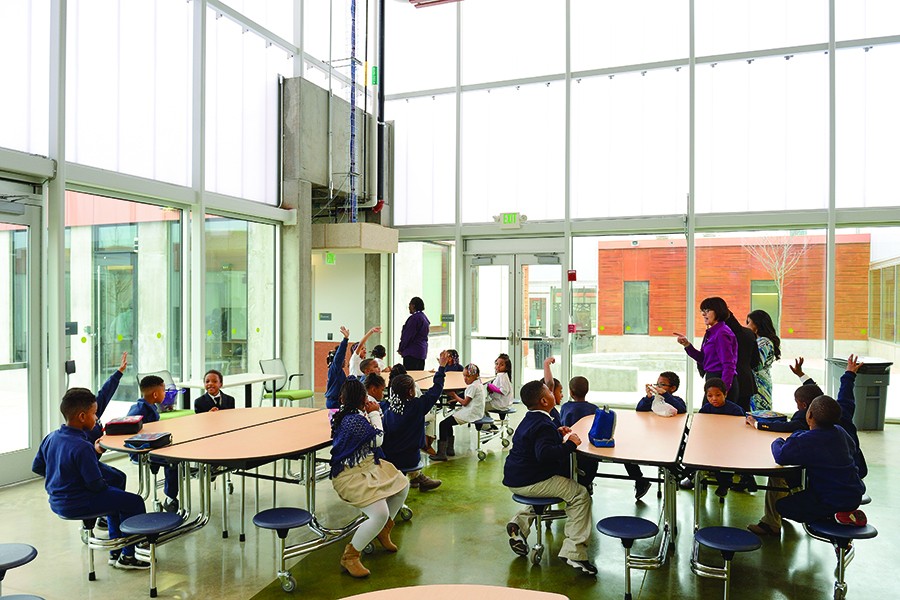In January, teachers welcomed students to Henderson-Hopkins, the first new school built in East Baltimore in more than 20 years.
Operating under a contract with Baltimore City Public Schools, Henderson-Hopkins is run by the Johns Hopkins School of Education in partnership with Morgan State University's School of Education and Urban Studies. The opening of the school—whose formal name is Elmer A. Henderson: A Johns Hopkins Partnership School—marks Hopkins' first foray into university-assisted community school partnerships, a strategy of education reform that has been spreading throughout the United States the past 30 years. The school will allow School of Education students to work closely with teachers and children, bringing back to university classrooms what they've learned in the field.
"This school will change the way we think about training teachers for the future," says David Andrews, dean of the School of Education. "What we learn there will come back into our higher education programs that change the way we train teachers to work in these types of educational settings."
The building is divided into five "houses," including the $10 million, 30,000-square-foot Harry and Jeanette Weinberg Early Childhood Learning Center, for kids as young as 6 weeks. Each house has its own central meeting area and adjacent "servery," or cafeteria, modular spaces that can be rearranged as teachers see fit. High-tech gizmos, from "smart" white boards to large-screen TVs and laptop computers, abound, as do reading areas and flexible workspaces. There's a full-size gymnasium and a 300-seat auditorium available for community use, as well as an airy art room and music rooms with practice suites.
Teachers are using a curriculum based on Success for All, a literacy and language program developed by School of Education Professors Robert Slavin and Nancy Madden that emphasizes cooperative learning, steady assessment, and family engagement. "Personalized" education is also a buzzword here, with teachers keeping easily accessible computerized records on student achievements, test scores, strengths, and weaknesses. "It's really a 21st-century learning model," says Katrina Foster, the school's first principal.
University officials and community organizers also hope the school changes the very fabric of the economically depressed neighborhood, helping to attract a mixed income population and, as university President Ronald J. Daniels said in his September 2010 inaugural address, "restoring the city's east side as a safe, prosperous, and vibrant community."
"We have waited for this day for a very long time," Daniels said at the February 10 ribbon-cutting event, which was attended by Maryland Gov. Martin O'Malley, Baltimore Mayor Stephanie Rawlings-Blake, Sen. Barbara Mikulski, and U.S. Rep. Elijah Cummings, among others. "When we cut the ribbon this morning, it is with a sense of solemn obligation to ensure our students receive the education that every child in this country deserves, and with an immense sense of pride in all that we have and will accomplish together."








